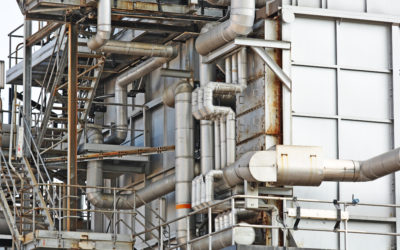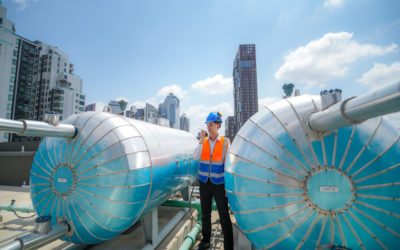How Changes in U.S. Energy Policy Could Shape the Future of Heat Exchangers
The U.S. energy sector is on the brink of transformation with the appointment of Chris Wright as the Secretary of Energy under President-elect Donald Trump’s administration. Known for his pro-fossil fuel stance, Wright’s leadership is expected to steer the country toward increased oil and gas production and a renewed focus on nuclear power. These shifts in the political landscape will inevitably impact the role of industrial equipment like heat exchangers, which are critical for efficiency in both fossil fuel and nuclear energy applications.
Heat Exchangers: Vital Across Energy Sectors
Heat exchangers are indispensable in a wide range of energy processes. In oil and gas, they play a pivotal role in heating, cooling, and energy recovery. Nuclear power plants are equally essential, transferring heat from the reactor core to steam generators, which then produce the electricity powering our homes and businesses. With Wright’s focus on expanding fossil fuel production and nuclear power, the demand for robust and efficient heat exchangers is likely to grow.
The Rise of Nuclear Power and Heat Exchangers
Wright’s expected support for nuclear power, an energy source with bipartisan appeal, could lead to an increase in nuclear energy projects. Nuclear power plants rely heavily on heat exchangers to maintain operational safety and efficiency. These devices manage the intense heat generated in nuclear reactions, ensuring the plant operates smoothly while minimizing risks.
The revival of nuclear power as part of the U.S. energy mix will heighten the need for advanced heat exchanger technology. Materials capable of withstanding extreme temperatures and corrosive environments will be crucial, as nuclear reactors operate under harsh conditions.
Challenges for Heat Exchangers in a Changing Landscape
While increased fossil fuel and nuclear energy production create opportunities, they also present challenges for maintaining heat exchanger performance. Corrosion, scaling, and fouling are common issues that reduce efficiency and increase operational costs. To address these challenges, surface treatments like HeatX can significantly improve the longevity and efficiency of heat exchangers.
HeatX forms a protective layer on heat exchanger surfaces, reducing corrosion, preventing fouling, and ensuring optimal heat transfer. HeatX minimizes maintenance costs and downtime by enhancing durability, making it an essential solution in this evolving energy landscape.
What About Renewable Energy?
The shift in focus toward fossil fuels and nuclear energy may slow the push for renewable energy sources like solar and wind. This could be a setback for green energy advocates, as renewables rely less on traditional heat exchangers. However, heat exchangers remain integral to renewable technologies like geothermal and certain solar thermal systems, ensuring their relevance across the energy spectrum.
Meeting Rising Energy Demands
As the U.S. faces surging power demand driven by AI, electric vehicles, and cryptocurrencies, the role of heat exchangers becomes even more critical. Whether in fossil fuel plants, nuclear reactors, or renewable energy systems, these devices transfer energy efficiently, reducing waste and maximizing output.
Adding technologies like HeatX can further enhance their performance, providing a sustainable solution for an energy-hungry future.
A New Era for Heat Exchangers
The political shift in U.S. energy policy is poised to reshape the energy landscape. With increased emphasis on fossil fuels and nuclear power, heat exchangers will be at the heart of efforts to boost efficiency and reduce costs. Innovations like HeatX will ensure these systems operate reliably, supporting the energy industry in meeting both current and future demands. Learn more about HeatX with our experts.



